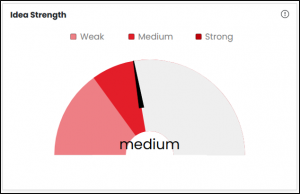
To find relevant prior art, a Google Patents search requires the searcher to create complex keyword strings and sift through thousands of documents.
Furthermore, some users are wary of using Google products due to a lack of trust and privacy concerns. Despite Google’s strong security features, some questions may arise: Will my idea remain confidential if I run it through the Google Patents search portal?
If you’re looking for an alternative to Google Patents for any of these reasons, you’ve hit the jackpot.
We’ll walk you through four more efficient alternatives to Google Patents in this article:
But first, we must understand why we need these patent search platforms.
What is Patent Search?
Patent searches are restricted to patent literature. When you file a patent application, examiner will perform a thorough patent search to identify inventions similar to yours in patents and patent applications, whether published or unpublished. Patent examiners also perform non-patent literature searches.
On the other hand, what is a Prior Art Search?
Prior art extends beyond patent literature to include disclosures, publications, and anything else that confirms someone else invented your invention. It includes both patent and non-patent literature, such as journals, books, periodicals, products, and any publication, as well as patents and patent applications.
But here’s the thing: sifting through millions of prior art items could take a long time. And what if you hire a lawyer or a law firm to do it? It would most likely cost you thousands of dollars.
As a practical step, you, the inventor, should conduct your own prior art search/ patent search to determine the patentability of your invention.
And,
How do you do it?
1. XLSCOUT’s Novelty Checker
Alternatively, to using Google Patents, you can use a prior art search tool designed for inventors, such as XLSCOUT’s Novelty Checker. Instead of a complex Boolean keyword search string, you can utilize the tool to describe your innovation in simple words on the search interface.
The Novelty Checker from XLSCOUT makes prior art searches easier for inventors. The tool searches for similar inventions to yours to determine whether a patent is feasible.
Using AI for patent search: A step-by-step guide to conducting an AI-based patent search with Novelty Checker is provided below:
Step 1 – Submit your Idea
Enter the Key Features of your Idea in Simple Words
Assume you created a battery-powered potato peeler. The peeler shaves potato peels smoothly and effortlessly with the press of a button.
So, how should you start your search? Begin with entering the problem you are trying to solve, then the invention title or technology domain, followed by key features or invention details of your invention in simple words. You can then either supervise the search (advanced search) or simply proceed to the search results.

Step2 – Supervise the Machine
Review the Top Results
Take a look at the results.
You may notice a variety of potato peelers with and without patents similar to yours. Our AI-based patent search tool displays the Top-20, 50, or 100 closest results along with the similarity score and feature mapping with respect to the invention. You can screen your ideas by comparing them with more than 150 million patents and 220 million+ research publications in real time.

Generative AI: A New Approach to Ideation
XLSCOUT has employed Generative AI in its patent search tool. Using this, XLSCOUT is assisting individuals and organizations come up with new and innovative solutions to problems. Ideacue by XLSCOUT is designed to assist inventors with idea generation. We have created an Idea Playground powered by Generative AI for inventors. It suggests machine-generated inventive concepts to inventors, which they can combine with their own ideas to improve. These ideas can be generated based on the user’s preferred technology. As an interactive dashboard, Idea Playground allows users to select inventive concepts and sub-concepts and generate AI-based ideas based on them.

Inventive concepts act like idea triggers that can be used to simulate ideation and generate new ideas. Subsequently, these can be very useful for inventors. They assist them in thinking outside the box and developing creative solutions that they would not have considered otherwise. Along with ideation, idea evaluation is also an important part of the innovation cycle. XLSCOUT also includes an Idea Dashboard. The easy-to-use dashboard helps you with idea evaluation, brainstorming, and improving idea quality. It provides numerous other insights while significantly increasing the efficiency of research and development. The dashboard assists inventors in quickly assessing the strengths and weaknesses of their ideas in a few simple steps. It gives a qualitative indication of the strength of an idea. Subsequently, using the indicator, inventors can determine whether or not their idea is ready to move forward. Or whether it requires more brainstorming or iterations.

Step3 – Novelty Search Report
Get an Automated Novelty Report within 5 minutes!
If any relevant results are found, click “Generate Report.” After that, a PDF report will be emailed to you. The Novelty Checker’s Automated Novelty Reports include a list of results along with relevant text mapping with the key features of the invention for enabling quick decision-making.

2. PATENTSCOPE
PATENTSCOPE, a service provided by the World Intellectual Property Organization (WIPO), is a strong contender for Google Patents’ replacement. Overall, PATENTSCOPE offers an impressive collection of resources to help you stay up-to-date with the latest trends in technical innovation and licensing agreements.
With PATENTSCOPE, you can narrow your patent searches across over 100 million patents worldwide by using meta-level filters. It is search engine technology that is freely available all over the world.
It’s a one-stop shop for patent search and research, with features like in-depth patent descriptions, images, abstracts, and citations.
Pros:
- Allows for patent searches in languages other than English.
- Instantly translates non-English patents.
- Provides a search based on chemical structure.
- Allows you to download the results in Excel format.
- Educates readers on how to use the search engine effectively.
Cons:
- To conduct the search, the user must first create a complex combination of fields.
3. USPTO
Despite its popularity, the USPTO search interface has several flaws, including a lack of filters for specific topics, constrained results based on keyword relevance, and slow loading times. These issues can make it difficult to find the information you need quickly and efficiently.
Furthermore, the data presented in the search results is extensive but difficult to understand or use. Tables frequently have too many columns and rows, making it difficult to concentrate on specific information.
Pros:
- This database contains over 1 million patent records.
- Search in patents and patent applications using 50 different fields.
Cons:
- Its search interface is complicated and out of date.
4. Espacenet
Espacenet is a European patent database that contains over 130 million patents, both granted and pending.
It provides free access to information on inventions and technological developments from 1782 to the present. It was created by the European Patent Office (EPO) in collaboration with the European Patent Organization’s member countries. Most member countries have an Espacenet service in their native language as well as access to the EPO’s global database, the majority of which is in English.
Pros:
- Allows for the instant translation of non-English patents into over 30 languages in high quality.
- Allows users to quickly jump between results to review technical drawings.
- Provides useful information about applicants, inventors, and technology fields.
Cons:
- Users are required to enter complex keyword search strings.
Our Methodology
XLSCOUT put the use of reinforcement learning to its AI-based Novelty Checker (patent searching tool) to get quality patent research reports in just 5 minutes. The Novelty Checker uses reinforcement learning to filter the noise from the prior art by pulling up the relevant results on top of the list. To be precise, it assists in conducting patentability search to help you ensure that your innovation is unique. By selecting a few relevant and non-relevant results, users can apply them to the result set. The system takes the user’s feedback and then learns from it. It uses conceptual searching and re-ranks the results by bringing the quality results to the top and sending the noise to the bottom.
Without reinforcement learning, users go through hundreds of results manually. By applying this process, users can skip going through the non-relevant results. Reinforcement can also be applied multiple times to a result set according to users’ different requirements/criteria. Users can then view the Top-10 or Top-20 results for each criterion to perform a prior-art analysis for idea validation. Users can quickly generate an automated novelty report by selecting these Top-10 or 20 results.

